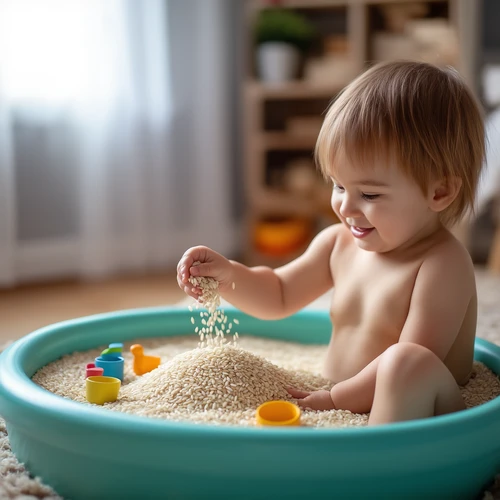Play is the engine of early learning. In the first years, toddlers explore the world mainly through hands, senses, and imagination. Thoughtfully chosen play activities not only entertain but accelerate development in key areas: language, motor skills, problem‑solving, and social interaction. Below are dozens of ideas that fit any home, daycare, or outdoor setting.
1. Sensory Bins – Fill a shallow container with rice, pasta, or beans. Add wooden scoops, plastic animals, and small umbrellas. Kids can bury, scoop, and classify textures, sparking tactile curiosity while strengthening fine‑motor coordination.
2. Treasure Hunts – Hide everyday items (a spoon, a sock, a feather) and give a pictorial map or simple directions. This turns a routine walk into a language‑rich adventure, encouraging listening and following instructions.
3. Pretend Kitchen – Offer plastic pots, a toy stove, and cardboard ingredients. Kids learn basic counting when measuring spoons and develop narrative skills when they "cook" a story.
4. Obstacle Courses – Use cushions, tunnels, and gentle ramps to build a crawl or walk path. It challenges gross‑motor skills and introduces basic physics concepts like balance and momentum.
5. Musical Exploration – Provide simple instruments: a tambourine, drum, or maracas. Play short songs and ask children to mimic rhythms, nurturing auditory discrimination and expressive movement.
6. Art & Craft Zones – Set up paper, crayons, and safe scissors. Encourage open‑ended creation; toddlers enjoy scribbling and later describe their artwork, strengthening fine motor strength and vocabulary.
7. Story Time with Props – Read a short picture book and let children hold corresponding objects. Touching characters from the story boosts recall and turns passive reading into an active dialogue.
Tips for Success:
• Keep materials safe and age‑appropriate: avoid small parts and sharp edges.
• Rotate toys regularly to maintain novelty and prevent overstimulation.
• Set a modest time limit (10‑15 mins) to keep attention focused while preventing fatigue.
• Join in actively – modelling curiosity encourages participation and deepens bonding.
By mixing these playful strategies, you create a rich learning environment that feels joyful rather than didactic. Every session builds foundational skills, turning everyday moments into meaningful growth.


